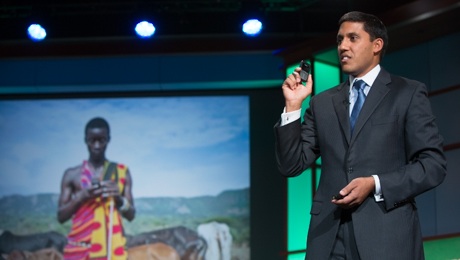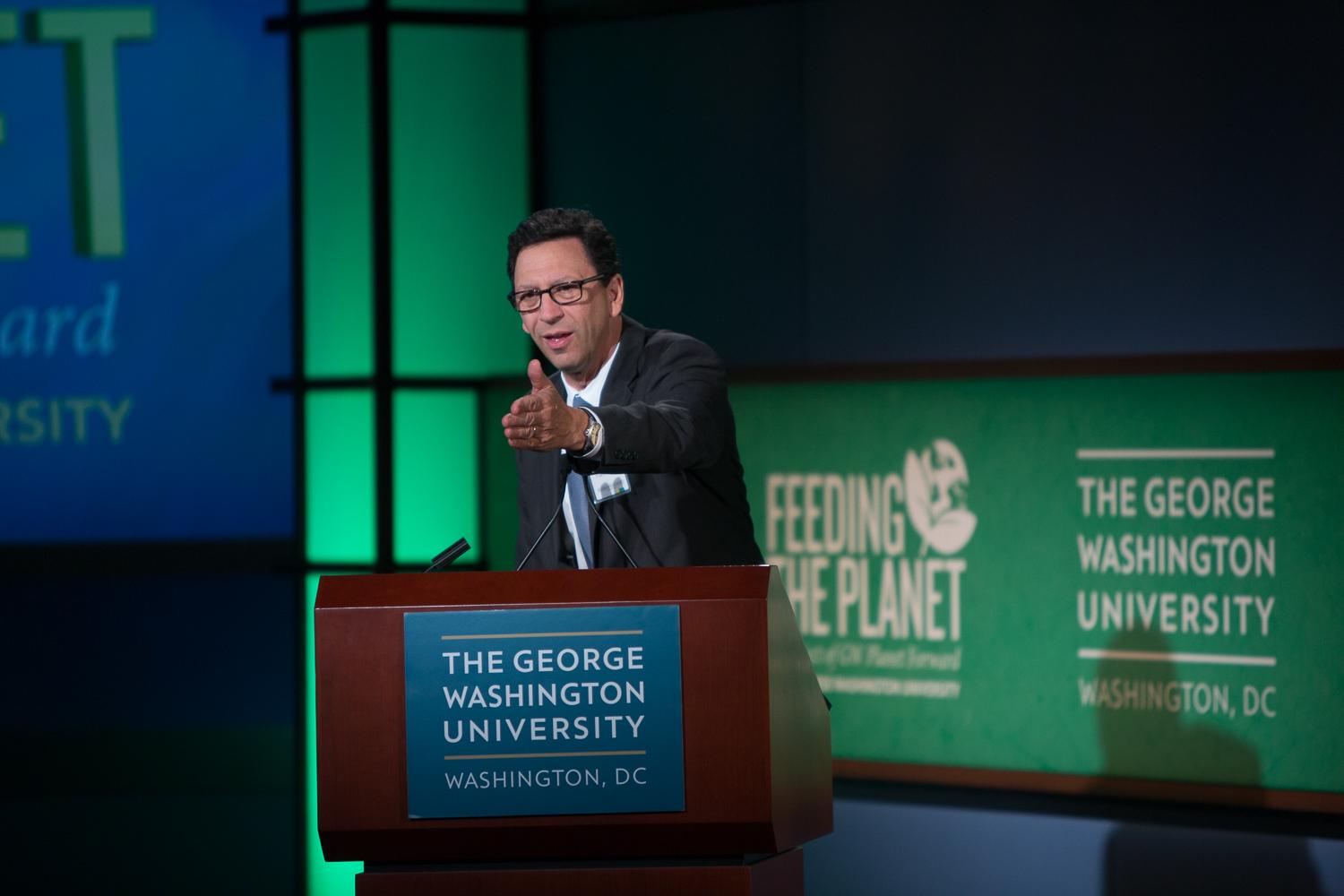By Lauren Ingeno
By the year 2050, experts predict the world population will rise to 9 billion.
To meet the needs of that many people, humans will have to produce as much food in the next 40 years as they have in the last 8,000, says Jason Clay, senior vice president of market transformation for the World Wildlife Fund. Currently, more than 800 million people in the world do not have enough to eat.
And as the world population surges, the Earth’s health is declining. Humans are destroying forests, draining rivers and building factory farms to increase food production. Meanwhile, climate change is impacting all elements of food security—availability, access, utilization and stability.
So how will we feed the world without destroying the planet? And what role will consumers, farmers, policymakers and scientists play in addressing these challenges?
These were two of the big questions tackled at the day-long Feeding the Planet Summit held in the George Washington University’s Jack Morton Auditorium on Wednesday.
“Feeding the Planet: Sustainable Innovations in Food Security” was launched by GW Planet Forward—a project created in 2009 by GW School of Media and Public Affairs Director Frank Sesno and based at SMPA’s Center for Innovative Media. Planet Forward is an online community where “experts and engaged citizens come together” to find solutions in the areas of energy, climate and sustainability.
























